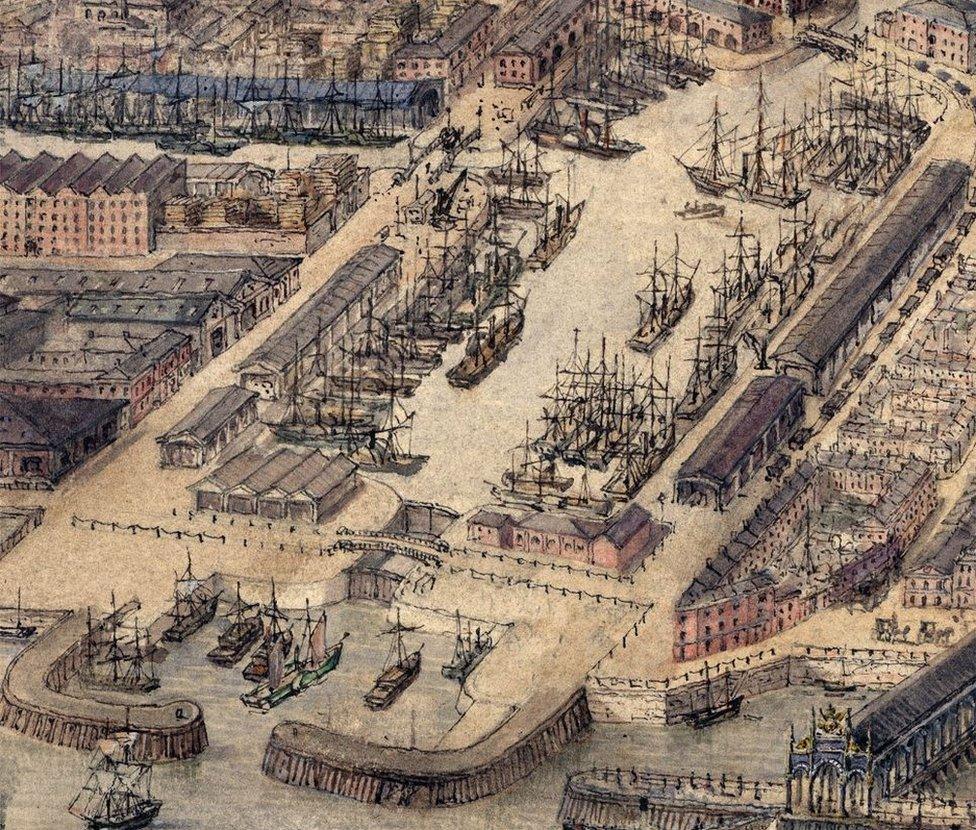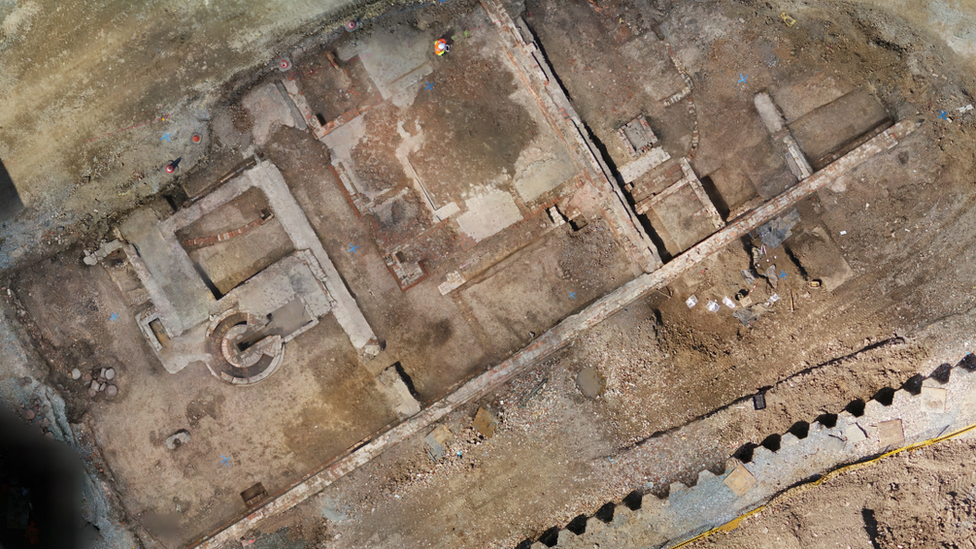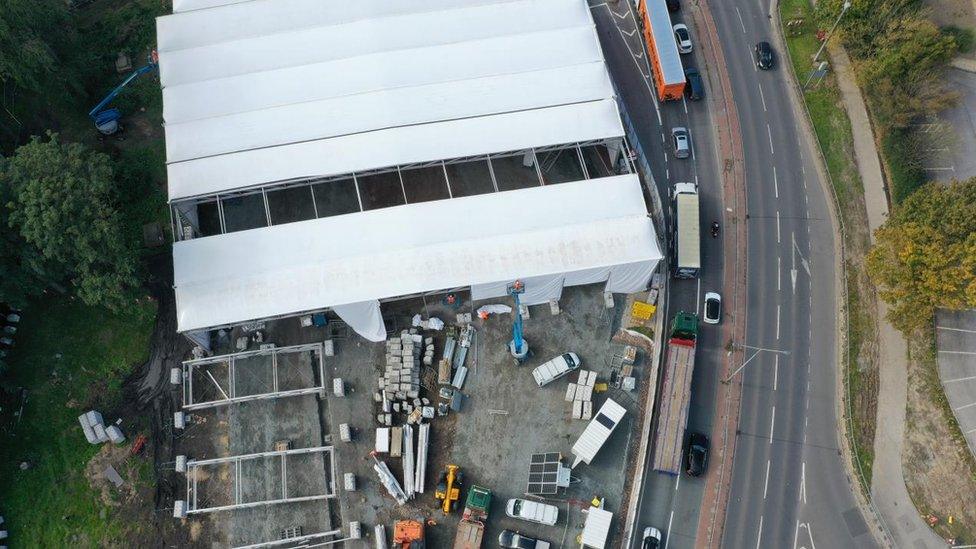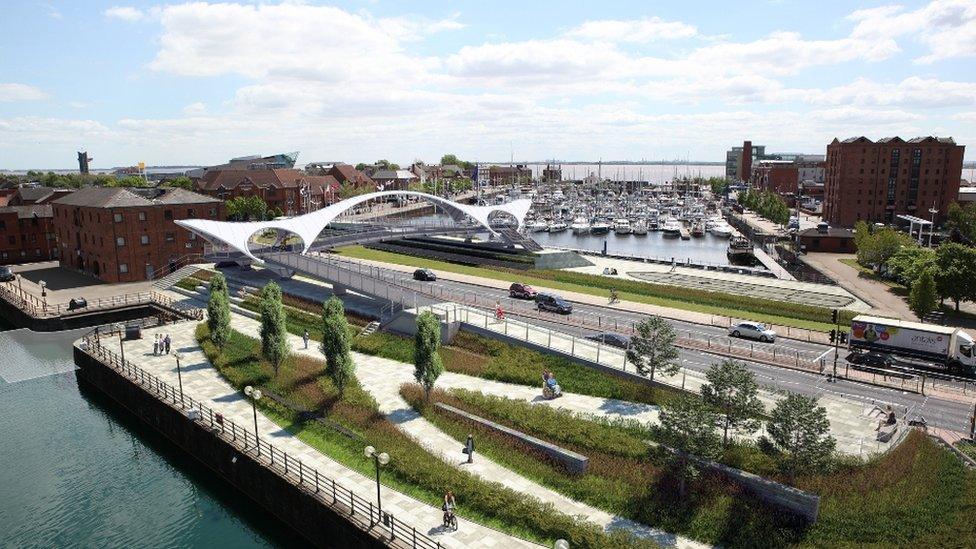Hull A63 Castle Street dig: Remains of 1837 dockland disaster victim uncovered
- Published

The remains were found among thousands of bodies exhumed form the former Trinity burial ground in Hull
Remains of a victim of "one of Hull's worst dockland disasters" have been uncovered by archaeologists working on a major road improvement scheme.
A total of 23 people were killed when the steam-powered vessel Union exploded in 1837.
The remains found were among more than 9,500 bodies exhumed from the Trinity burial ground.
Excavations have been taking place at the site as part of a £355m scheme to revamp the A63.
Among the bodies exhumed is thought to be a passenger killed in the explosion on board the Union, which was due to depart from Hull and return to Gainsborough on 7 June 1837.
Highways England said archaeologists believe the victim's fatal injuries "could well have been caused by one of Hull's worst dockland disasters".
It is thought about a third of the victims were buried at the Trinity burial ground.


View of the Humber Basin and the Humber Dock (now the Hull Marina) circa 1854
Explosion of the Union Steam Packet
The steam packet or steam-powered vessel shipped goods and people from Hull to other parts of central and northern England.
On the morning of 7 June 1837, the Union was due to depart from the Humber Dock, now known as Hull Marina, for Gainsborough.
Minutes before its departure the boiler burst causing a massive explosion, resulting in the deaths of 23 people.
It is thought there were 100 passengers onboard at the time.
An inquest into the deaths found the Union's engineer, Joseph Gamble, guilty of manslaughter.

About 80 archaeologists have been working on the dig since October 2020.
Other finds at the site include an 18th Century jail, a suspected World War Two bomb site and traces of a medieval settlement.
Highways England said the dig, which has been described as "the largest-ever scientific excavation of a post-medieval burial ground in northern England", will finish this autumn.

Other finds at the site include an 18th Century jail, a suspected World War Two bomb site and traces of a medieval settlement
Fran Oliver, project manager at Highways England, said: "Archaeological investigation is an important and sensitive part of the major projects Highways England carries out.
"Experts are now using the findings from the year-long excavations to develop a more detailed picture of the people who lived in Hull in the 18th and 19th Century and how they lived in society.
"The archive of data will be stored so that the knowledge is preserved for this and future generations."
Bodies exhumed during the work are to be reburied in an unaffected part of the burial ground, which was used between 1783 and 1861.

Follow BBC East Yorkshire and Lincolnshire on Facebook, external, Twitter, external, and Instagram, external. Send your story ideas to yorkslincs.news@bbc.co.uk, external.
Related topics
- Published1 December 2020

- Published16 October 2020

- Published14 March 2018
